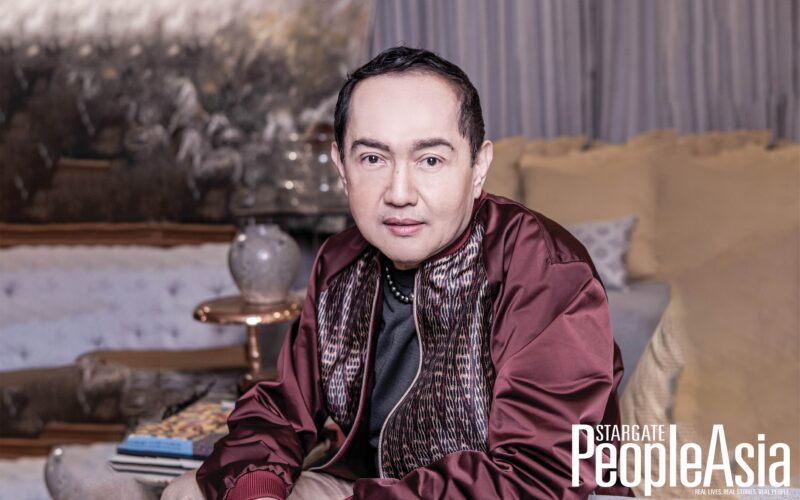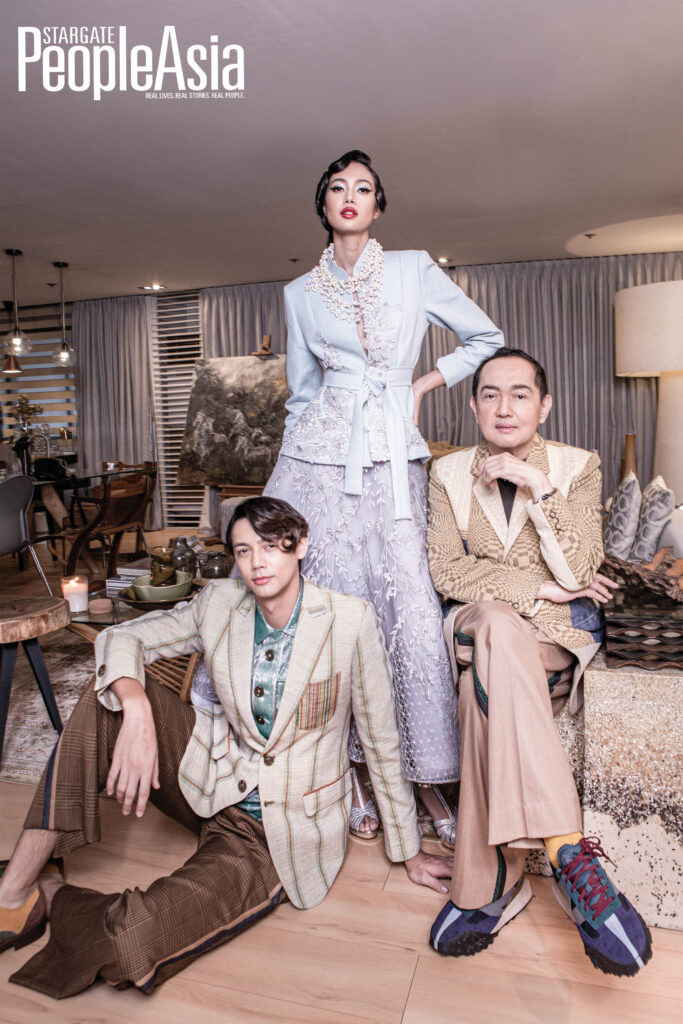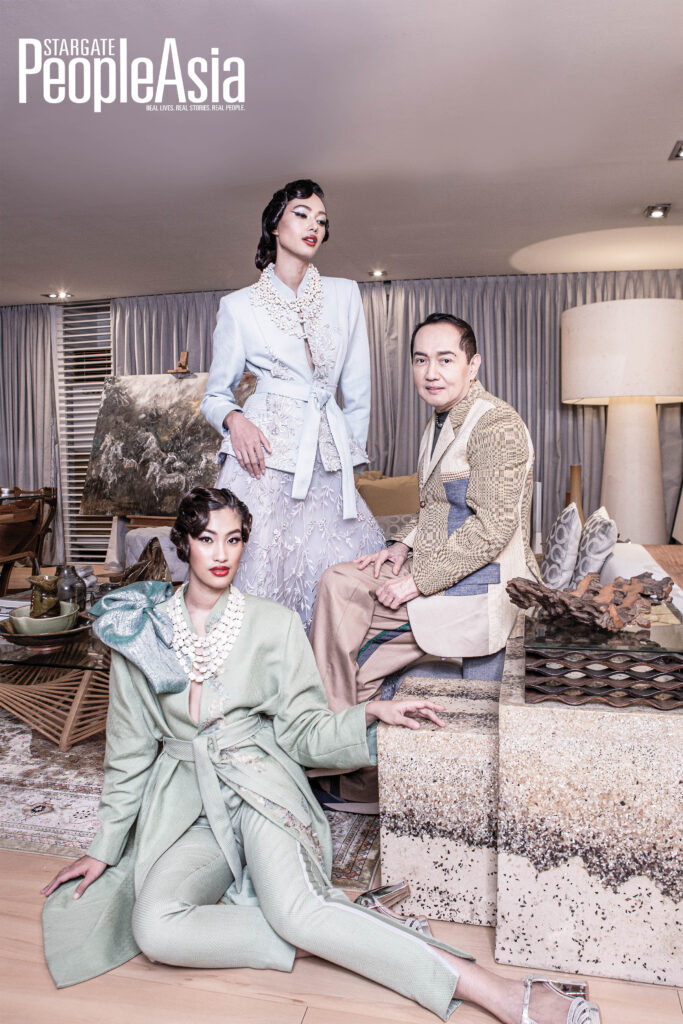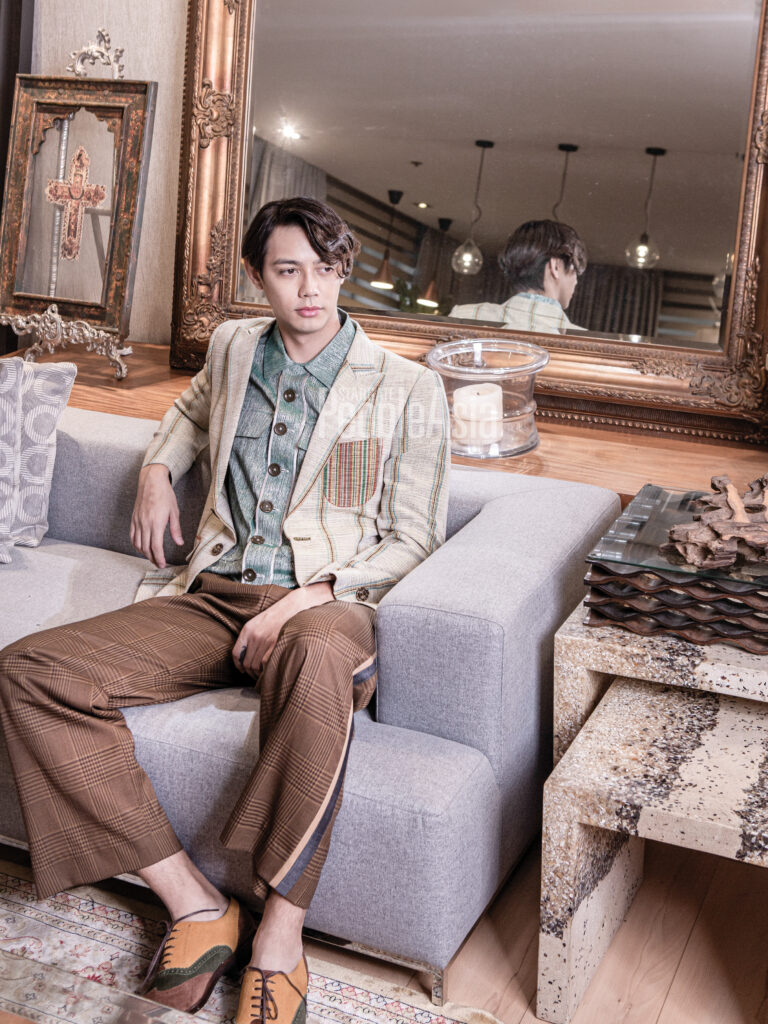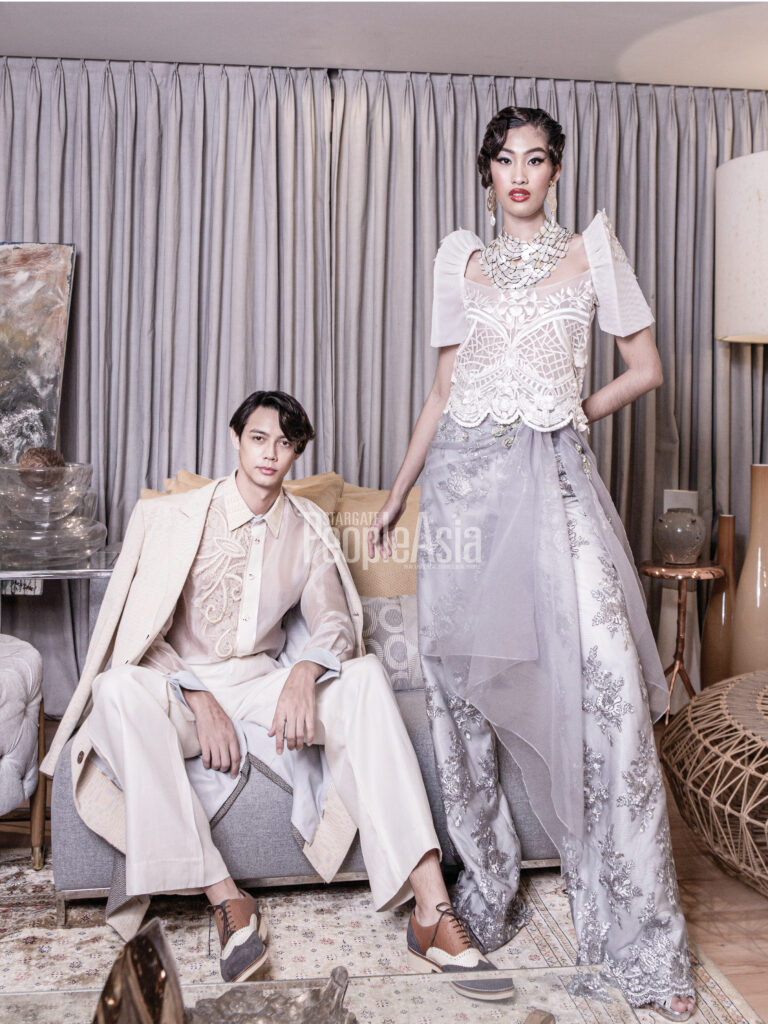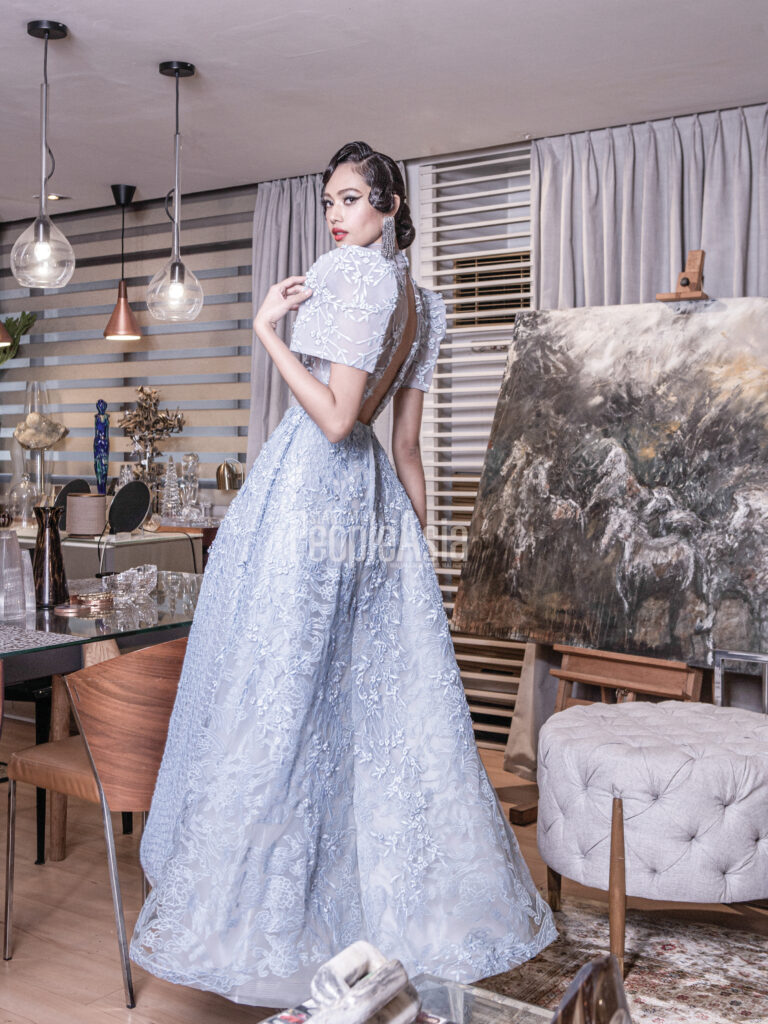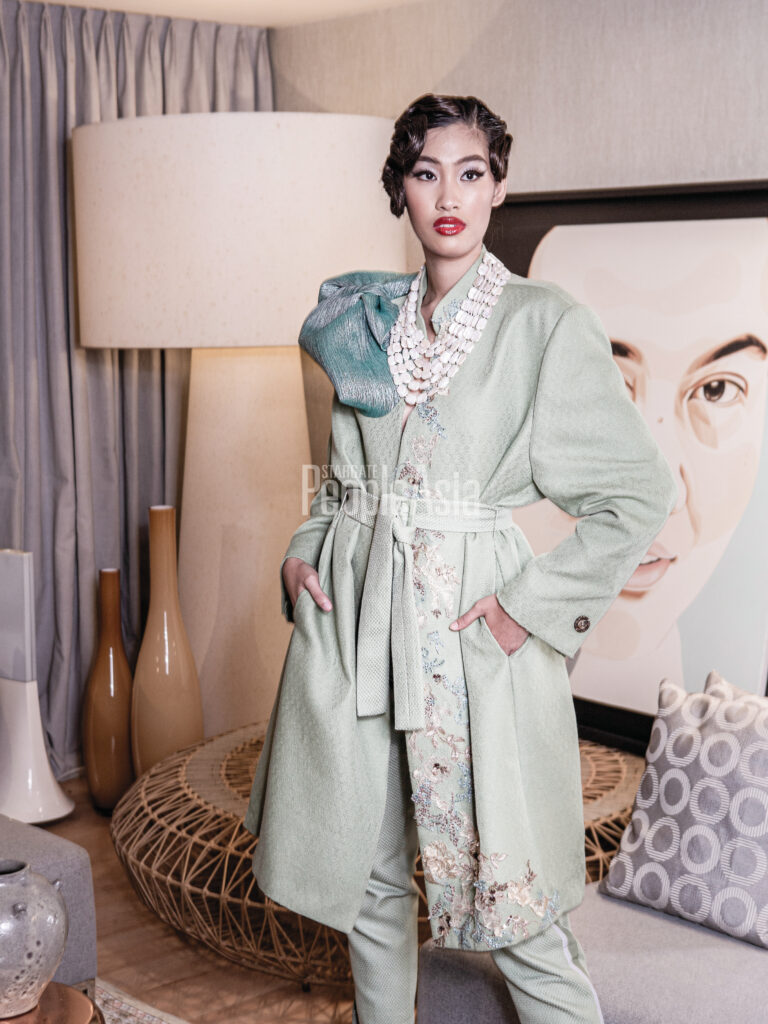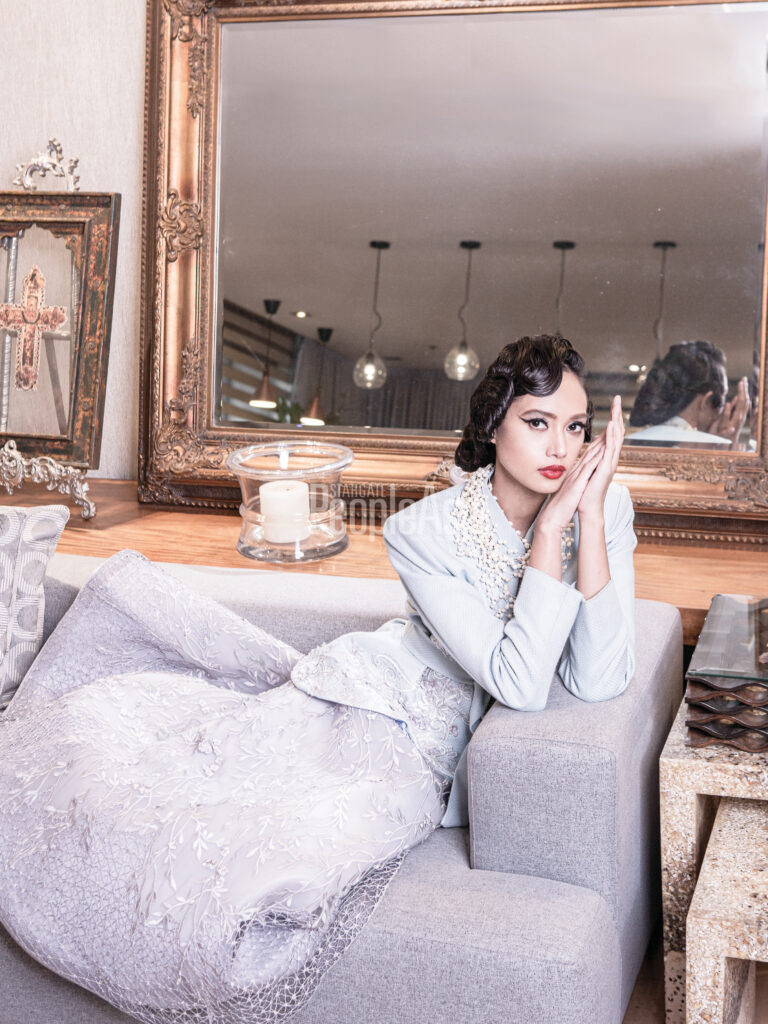By ALEX Y. VERGARA
Photography by MAU AGUASIN
Art direction by DEXTER FRANCIS DE VERA
To mark his 35th year in the fashion biz, one of the country’s leading designers will stage a milestone show on Nov. 16 that marries Pinoy heritage and traditions with Western sensibilities. The event is both a celebration of his growth as an artist as it is a testament to how he, like the rest of the world, overcame his fears and turned an otherwise turbulent time like the pandemic into a season to create.
It’s during times of relative peace when artistically inclined people usually accomplish substantial work, but it’s during times of turmoil when the true artists among them can rise above the uncertainty to produce their best works yet. This seems to be the case for veteran designer Randy Ortiz, who celebrates his 35th year in the business with a gala fashion show on Nov. 16 at Greenbelt 5.
Drawing inspiration from the country’s rich heritage, including the treasure trove of handwoven fabrics Filipino artisans produce from north to south, and combining them with Western sensibilities and materials, Randy aims to come up with a 50- to 55-piece collection, including several men’s wear looks, that mirrors his vision of the 21st century “global Pinoy.”
“Despite the obvious Western references, my design sensibilities have always been overwhelmingly Filipino,” says Randy as he welcomes us in his home office in Makati. “But this new collection won’t be direct translations of the baro’t saya and terno.”
Design DNA
Since Randy’s design DNA is also heavily influenced by ready-to-wear, owing not only to his start as a men’s wear designer in the late ’80s, but also to the early years he spent honing his craft as one of Sari-Sari Store’s best-selling in-house designers, he assures us that he won’t also be venturing into the realm of the edgy and avant-garde, and instead produce pieces that remain “wearable and timeless” despite the embellishments and design flourishes that make them special and one-of-a-kind.
“When you venture into Filipiniana, there’s always this thin line between producing costume-y pieces and high fashion that you must be mindful of,” he says. “For me, the challenge has always been how to make Filipino-inspired clothing chic and global, something you can readily wear here and abroad.”
To achieve his vision, Randy would be combining imported fabrics like silk and taffeta with a range of native handwoven fabrics from piña and hablon from the Visayas to inaul and t’nalak from Mindanao as well as inabel and indang from Luzon. This time, he is steering clear of soft willowy fabrics like chiffon since his collection’s overall silhouette is structured.
He’s also giving certain go-to embellishments — from sequins to various mass-produced beads — a rest. Instead, to fully reflect his roots, certain key pieces in his collection will showcase Filipino-style embroidery, particularly the laboriously painstaking calado method, by embroiderers from Laguna and Bulacan.
Apart from such staples as inabel and inaul, Randy is incorporating indang, a relatively new type of handwoven cotton fabric, which was developed by the Remullas of Cavite. Adding some visual punch to the collection, are men’s bomber jackets and a tuxedo made of indigenous fabrics.
Virtual biography
If this latest collection were a virtual biography of Randy’s life, the designer seems to have it all covered. Born in South Cotabato and raised by Ilonggo parents from Iloilo, the Hiligaynon-speaking Randy eventually spent his formative years in Luzon, specifically in Manila, where his lawyer-father, a member of the judiciary and the 1970 Constitutional Convention, was later assigned.
“The range of indigenous materials I’ll be using is an homage to the country’s three main island groups that each holds a special place in my heart,” he says.
He has yet to finalize certain details of the show. This early though, he envisions to divide the event into 10 to 15 suites to be directed not by one director, but two of the country’s best, namely Jacky Aquino and Robby Carmona. Randy has so far cast 15 foreign models, to help establish the show’s global Pinoy theme.
The show will have a colorful opening focusing on Mindanao fabrics before it moves to the Visayas. Its final leg will train the spotlight on Luzon before the show reaches its grand climax with what the designer describes as its “Manila wear” finale.
“For Manila wear, I’m tapping the likes of Tweetie de Leon, Apples Aberin and all the senyoras (senior models),” Randy reveals.
During the show’s planning stages, he considered holding it in the usual hotel. But after some thought, he finally settled on a semi-outdoor venue. Trends notwithstanding, holding a fashion show in a more informal venue, says Randy, “feels more organic and reflects the type of clothes I’m showing.”
“It’s also a way of democratizing fashion since mallgoers are free to watch the show,” he adds. But a private sitting area will be reserved for special guests, sponsors, journalists and other VIPs.
Long history with Ayala
And for sentimental reasons, he finally settled on Greenbelt since he has had “a long history” with Ayala Malls, dating back to the time when he was president of the Fashion Design Council of the Philippines, where the bulk of their shows, as well as the design competitions the council spearheaded, were held in Greenbelt and Glorietta.
“During those design competitions, people behind Ayala Malls, led by Bea Zobel Jr., were very supportive in terms of providing us with funding and venue,” he says. “Greenbelt and Glorietta have also been silent witnesses to my numerous collaborations, especially with Bench. I was also one of the first designers to establish a presence at Greenbelt’s Philippine zone with the opening of the multi-designer store Myth.”
All these elements and moving parts were slowly being hatched during the height of the pandemic, a rather difficult time for everyone including an immunocompromised Randy who, oddly enough, suddenly found himself grieving once more over his late parents whom he had lost more than a decade ago.
“No, I don’t feel guilty because I provided for them, especially during their twilight years,” he says, his eyes suddenly turning misty. “I was always there for them and my siblings. I guess my biggest regret was not spending more time with my parents. How could I when I was doing an average of 15 weddings a month, including the bride’s entourage. But the pandemic, and the sadness and isolation it brought, had a way of making us all pause and reflect on our lives.”
To further add to the family’s collective woes, Randy’s elder brother passed away during that period from Chronic Obstructive Pulmonary Disease. He also had to extend a helping hand to a younger brother who was in and out of the hospital from a non-COVID-19 ailment. Despite living a comfortable life, Randy doesn’t see himself as the most financially successful among his siblings, several of whom are now living in the United States. He would rather describe himself as “blessed.”
“Grabe ’yung responsibilities ko sometimes,” he says. (My responsibilities can sometimes be overwhelming.) “There were times when I was saying to myself, ‘Mommy, Daddy, I hope you are still here with us. Please help me!’”
Unable to see his friends in person before the vaccine’s rollout, Randy was able to cope with the doom and gloom around him by closing his sprawling condo unit in Makati and moving back to the family’s old home in Quezon City, where his first shop is also located, to shelter in place with his siblings and their families.
It was also during this time that Randy, rummaging through his inventory of fabrics, buried himself in work, designing looks, cutting fabrics and having his dressmakers who chose to stay put in Metro Manila sew them. “I had no clear idea where to show them or whom to sell them to,” he says. “No one even knew what would happen the next day. Basta, gawa lang kami nang gawa.” (We just kept on producing.)
When the COVID situation started to ease up, Randy began to heave a sigh of relief, as he slowly met up with close friends within the same so-called bubble. Thanks to the extra time in his hands, he was also able to build a property, his dream weekend home in a gated community in Tagaytay, during the latter stages of the pandemic.
It was also during this time when he discovered, much to his delight, that he and his team had already produced a substantial number of clothes. All the prolific Randy had to do was to keep on producing more looks in time for his milestone show next month.
Commercially successful
Never one to take himself too seriously despite his enviable accomplishments, Randy has endeared himself in the industry for his funny, self-effacing nature. But his casual demeanor can be quite deceiving. For all his mild-mannered ways, the designer, a natty dresser himself, is also an astute businessman and arguably one of the most commercially successful creatives in the country.
Unlike most fashion designers who are dependent on their business managers to take care of money matters and rein them in whenever they tend to overspend, which happens a lot, Randy has been managing his own affairs ever since he decided to embark on the clothing business a few years after graduating with a degree in Hotel and Restaurant Management from the De La Salle University.
He once dabbled in the food business soon after college with good friends, including Katrina Ponce Enrile, and was being convinced later by his father to follow in his footsteps. But Randy, the fifth in a brood of seven children, told his dad that the legal profession wasn’t for him. Instead, he further developed his entrepreneurial skills which found an outlet when he finally decided to do clothes.
“The typical monthly starting salary then was P2,000, but I soon realized when I first started designing and selling men’s clothes that I could easily earn up to P30,000 a month. I borrowed P30,000 from my sister’s friend as starting capital. Within three months, I was able to return the money to her three folds. My mindset then was purely that of a businessman,” he confesses.
“Admittedly, I’m also a gastadora (extravagant shopper), especially when I was younger,” he says with a chuckle. “It fuels my creativity. But I guess age has a way of tempering our many desires. If ever I do splurge these days, I just make sure that I have 20 times that amount in the form of savings.”
Unlike most of his contemporaries, he wasn’t formally trained as a designer. But Randy, who has always been openly gay, had always had his parents’ full support. And that support and acceptance, he says, spelled a big difference, emboldening and inspiring him to go out of his comfort zone, spread his wings and try out new things. Experience and hard work, which included several informal courses from some of the country’s best costureras (seamstresses), proved to be Randy’s best teachers.
Now that he’s less than a month away from marking his 35 years in the business, this designer has no plans of fading away anytime soon. Doing 15 weddings a month though is now a thing of the past, as he chooses to just focus on doing the bride’s gown and perhaps her mother’s. In the absence of a regular store carrying his RTW line, Randy will continue to be a permanent fixture in some of the country’s leading pop-ups such as Katutubo. “After my show in November, I plan to travel again and go on an extended holiday,” he shares. “Traveling is one of the things I’m passionate about. It teaches and inspires me a lot. I’ve been deprived from doing it for so long because of the pandemic. It’s time we all pick up the pace again.” That’s Randy Ortiz for you! A global Pinoy in the truest sense of the word.

